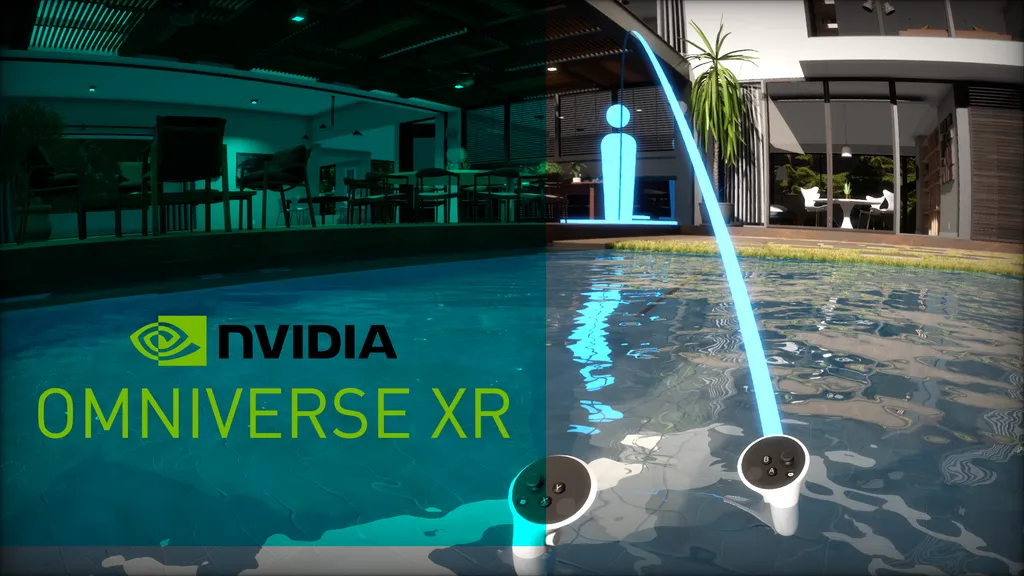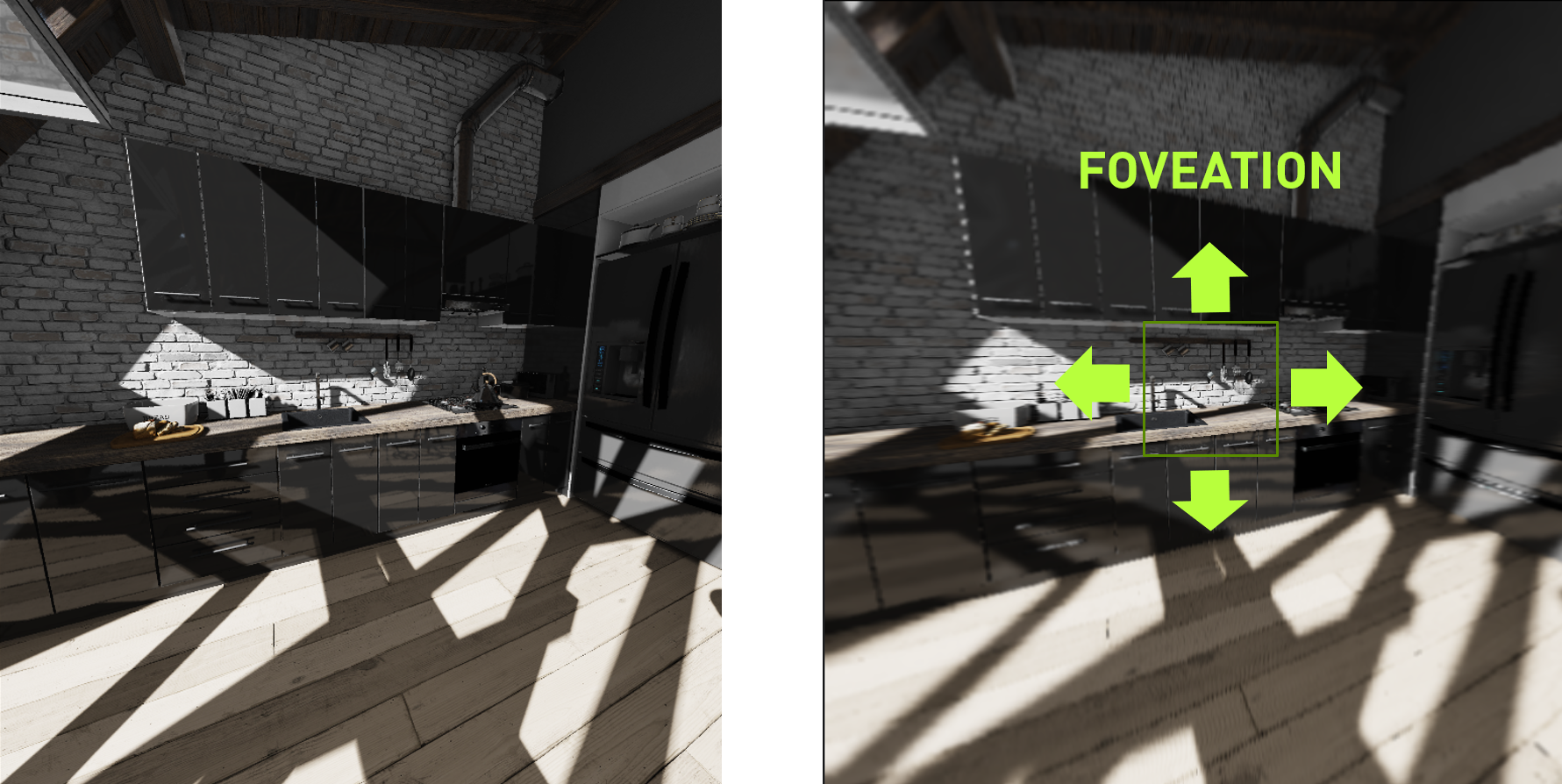Omniverse XR lets you view 3D scenes in VR with real-time ray tracing.
NVIDIA describes it as “the first full-fidelity, fully ray traced VR”.
Omniverse XR supports importing highly complex USD file scenes with tens of millions of polygons. Unlike game engines, since full ray tracing is used no preprocessing or compiling is required. Inside VR objects can be repositioned and rescaled, and the lighting will adapt in real time.
The application interfaces with SteamVR, so theoretically should work with any PC headset. However, only the Oculus Touch and HTC Vive controllers are officially supported as input devices.
Of course, real-time ray tracing in virtual reality is no easy feat. NVIDIA lists the minimum required GPU as an RTX 3080 Ti, and the recommended as two RTX 3090s with NVLink. To help with performance, Omniverse XR has built in static foveated rendering so only the center of the lens is rendered in full resolution. NVIDIA says the specific technique used here is “built specifically for real-time ray tracing”.
Whilst certainly an interesting experiment, those demanding settings are a good reminder of just how much computing power will be needed to power truly photorealistic VR running in real-time some day.
Omniverse XR can be downloaded inside the Omniverse launcher.































